-
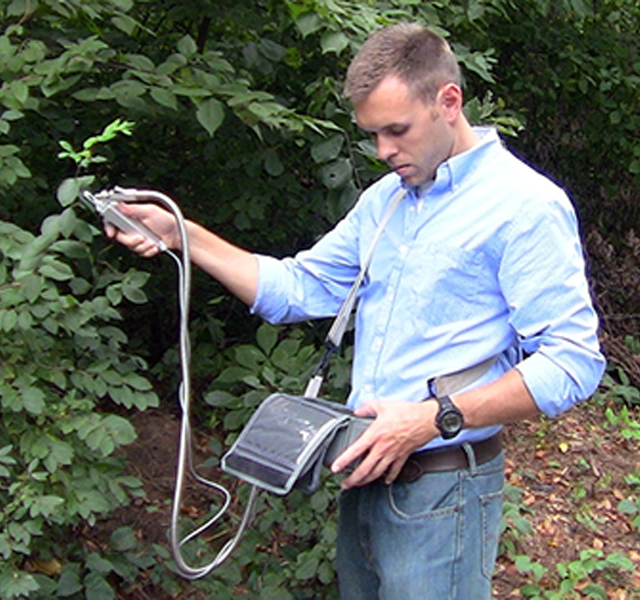 Measuring Y(II) or Δ F/F<span class="subscript">M</span>' protocol
Measuring Y(II) or Δ F/F<span class="subscript">M</span>' protocol -
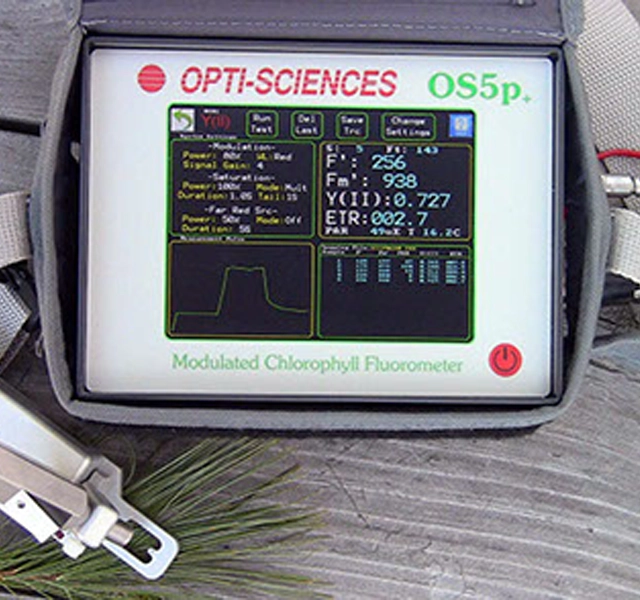 Measuring Y(II) protocol with Loriaux 2013 F<span class="subscript">M</span>' correction
Measuring Y(II) protocol with Loriaux 2013 F<span class="subscript">M</span>' correction -
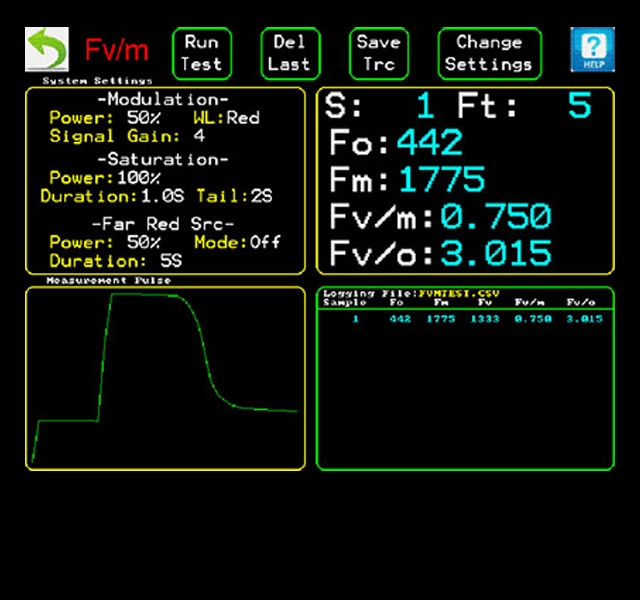 F<span class="subscript">V</span>/F<span class="subscript">M</span>
F<span class="subscript">V</span>/F<span class="subscript">M</span> -
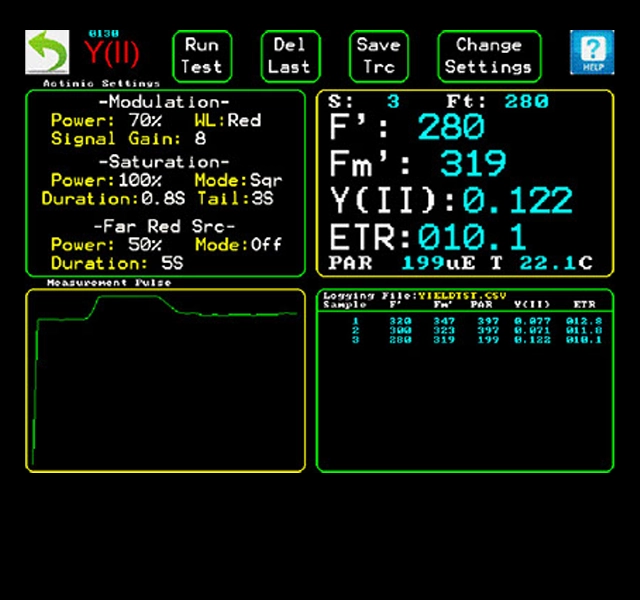 Measuring Y(II) with a square topped flash
Measuring Y(II) with a square topped flash -
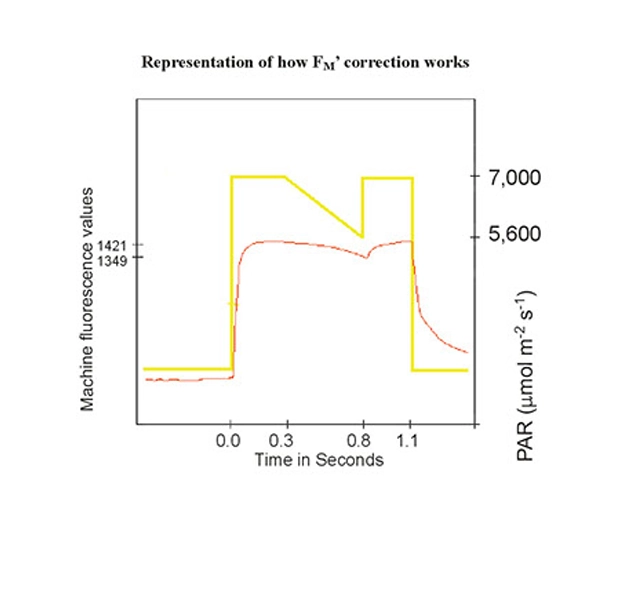 How F<span class="subscript">M</span>' correction works
How F<span class="subscript">M</span>' correction works -
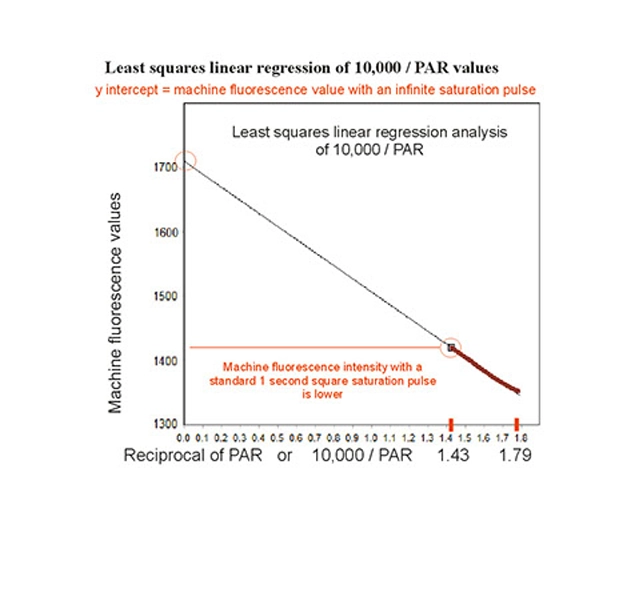 How F<span class="subscript">M</span>' correction works
How F<span class="subscript">M</span>' correction works -
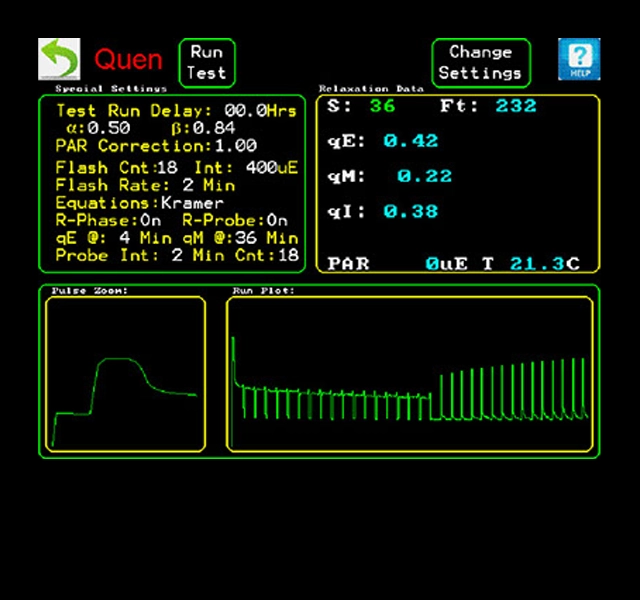 Measuring the xanthophyll cycle, chloroplast migration, and photoinhibition using Kramer quenching protocol equations
Measuring the xanthophyll cycle, chloroplast migration, and photoinhibition using Kramer quenching protocol equations -
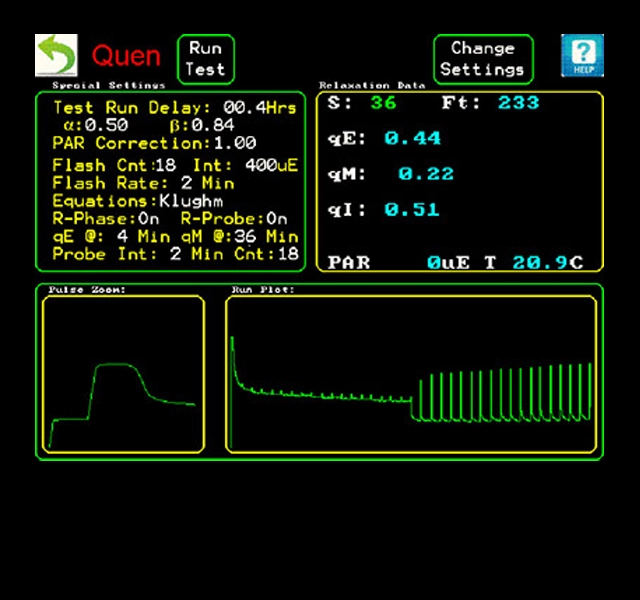 Measuring the xanthophyll cycle, chloroplast migration, and photoinhibition using Hendrickson quenching protocol equations
Measuring the xanthophyll cycle, chloroplast migration, and photoinhibition using Hendrickson quenching protocol equations -
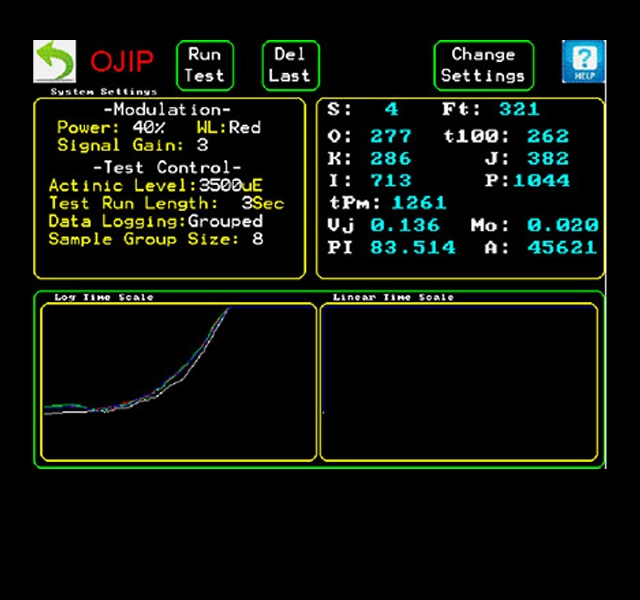 Strasser OJIP
Strasser OJIP -
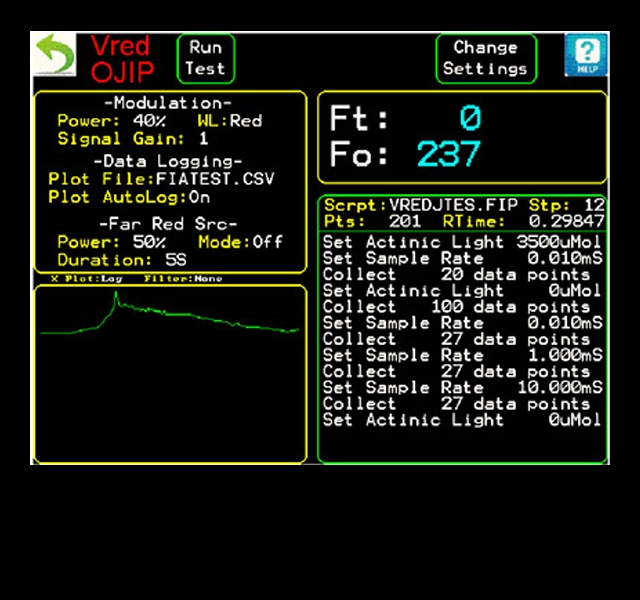 Programmable Vredenberg OJIP Investigation
Programmable Vredenberg OJIP Investigation -
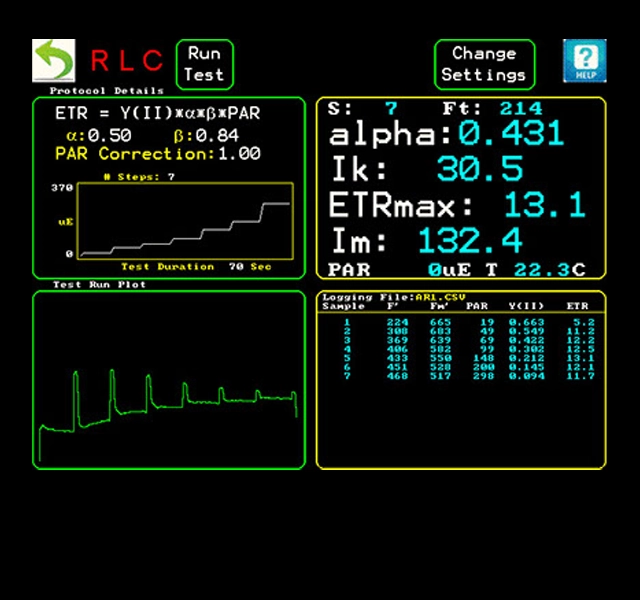 Rapid light curves
Rapid light curves -
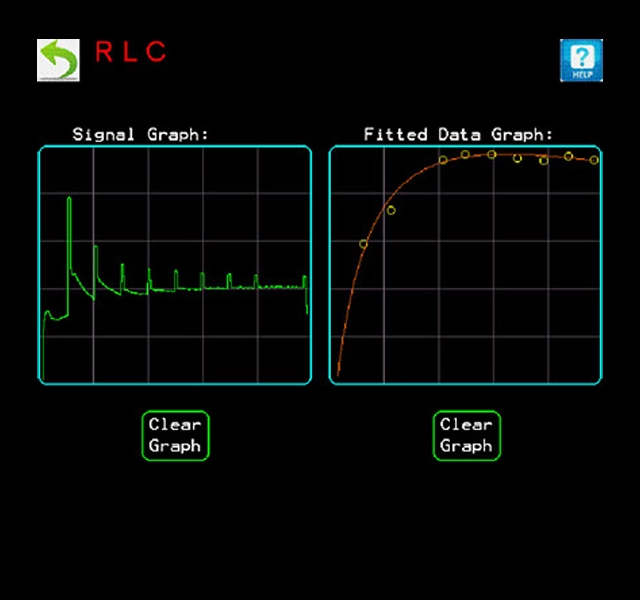 Rapid light curve graphs
Rapid light curve graphs -
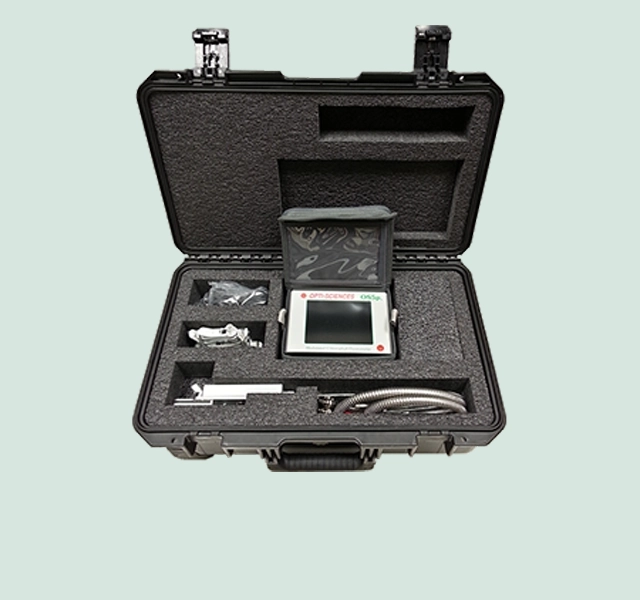 Protective transport case included
Protective transport case included
OS5p+
Chlorophyll Fluorometer
The most advanced portable modulated chlorophyll fluorometer available, with FM‘ correction option, according to Loriaux 2013, included for all light adapted protocols including quenching.
The OS5p+ portable system – includes the latest advancements in variable chlorophyll fluorescence measurements. The OS5p+ can measure most types of plant stress, and offers a wider range of up to date measuring protocols and automation.
The OS5p+ is designed to be the most advanced chlorophyll fluorometer available. It is intended for advanced plant research and plant stress measurement. It offers the latest updates in chlorophyll fluorescence capabilities, including: FM‘ correction according to Loriaux 2013, a stable white actinic white light source that allows chloroplast migration, and quenching relaxation measurement of qE, qT, qM, qZ, and qI. It also provides a comprehensive list of quenching protocols including Kramer lake model, Hendrickson lake model, and puddle model protocols. Other capabilities include: A Y(II) protocol, an FV/FM protocol, Strasser OJIP, Vredenberg OJIP, and Rapid Light Curves (for changing light conditions).
- Detection and Measurement of Most Types of Plant Stress
- Designed to allow & measure chloroplast migration qM
- Stable Internal Actinic Light Source for reliable field and laboratory quenching tests
- Loriaux (2013) FM‘ Correction Option or Square Topped Saturation Flash for all light adapted techniques including quenching
- PAR clip included – Measures PAR, leaf temperature, & ETR
- Integrated GPS/GLONASS location receiver
- 8 hour battery charge life
- Option for automated modulated light set-up
- Menu driven color graphic touch screen interface
- Data output via USB port and removable SD memory card
- Armored fiber optic light guide
Y(II):Quantum Yield of PSII (also called ΔF/FM’).
ETR:Electron transport rate.
PAR:Photosynthetically Active Region value.
T:Leaf temperature.
FV/FM:Maximum Photochemical efficiency of PSII.
FV/FO:A more sensitive detector of stress than FV/FM, but it does not correlate with gas exchange.
FO:Minimum chlorophyll fluorescence.
FM:Maximum chlorophyll fluorescence.
FV:Variable fluorescence.
FM’: Maximum fluorescence uaing a saturation flash (also called FMS).
FS:Fluorescence under steady state actinic conditions prior to saturation pulse (also called F’).
RLC (Rapid light curves):
rETRMAX:A measure of a leaf’s photosynthetic MAX capacity or maximum electron transport rate under variable light conditions. α is the initial slope of line at low PAR values created by relating ETR to PAR. It provides a measure of quantum efficiency.
Ik=rETRMAX/α:A measurement of the light intensity where light saturation dominates, or the minimum saturation level.
Im: PAR light intensity at ETRMAX.
Quenching protocol:
Hendrickson lake model quenching protocol:
Y(NPQ), Y(NO), Y(II), NPQ, FV/FM.
Kramer Quenching (standard):
qL, Y(NPQ), Y(NO), Y(II), FV/FM.
Puddle model parameters (standard):
NPQ, qN, qP, Y(II), FV/FM.
Quenching relaxation protocol (standard):
qE, qM, qZ, qT, qI along with either puddle model, or Hendrickson parameters. Adjustable times for each.
Strasser OJIP protocol:
Calibrated red actinic light source for use at 3,500 umol m-2 s-1 & 3,000 umol m-2 s-1.
O, t100μs, t300μs (K), t2ms (J), t30ms (I), P, tFM, A (area above the curve), MO (RC/ABS), PIABS (performance index) FO, FM, FV/FM, FV/FO.
ABS/RC, TRO/RC, DIO/CS, ETO/RC, TRO/ABS, ETO/TRO, ETO/CS,RC/CSO, RC/CSM , S, M, T.
Vredenburg OJIP:
FO (measured, not estimated).
OJIP – Vredenberg OJIP quenching protocol:
Ft/FO.
GPS location.
Parameters Measured and Protocols included:
Y(II):
Quantum Photosynthetic Yield of PSII (or F/FM‘ or Y).
ETR:
Electron transport rate (w/optional clip).
PAR:
Photosynthetically Active Region value (with optional PAR clip).
T:
Leaf temperature (with optional PAR clip).
FV/FM:
Maximum Photochemical efficiency of PSII.
FV/FO:
A more sensitive detector of stress than FV/FM, but it does not measure plant efficiency.
FO:
Minimum fluorescence.
FM:
Maximal fluorescence.
FV:
Variable fluorescence.
FMS (or FM‘):
Maximal fluorescence with actinic illumination at steady state fluorescence.
FS (or F):
Fluorescence under steady state conditions (prior to saturation pulse).
RLC (Rapid light curves):
rETRMAX:
A measure of a leaf’s photosynthetic capacity or maximum electron transport rate a is the initial slope of line at low PAR values created by relating ETR to PAR. It provides a measure of quantum efficiency.
Ik=rETRMAX/α:
A measurement of the light intensity where light saturation dominates, or the minimum saturation level.
I:
PAR light intensity at ETRMAX.
Quenching protocol:
Hendrickson lake model quenching protocol:
Y(NPQ), Y(NO), Y(II), NPQ, FV/FM.
Kramer Quenching (standard):
qL, Y(NPQ), Y(NO), Y(II), FV/FM.
Puddle model parameters (standard):
NPQ, qN, qP, Y(II), FV/FM.
Quenching relaxation protocol (standard):
qE, qM, qZ, qT, qI along with either puddle model, or Hendrickson parameters. Adjustable times for each.
OJIP:
Up to 32 traces can be overlaid on the graphic display screen. The data file is designed for easy overlay graphing and spider plot graphing. Thousands of measurement parameter sets can be stored in a single data file for spider graphing. The number of data files are only limited by machine memory limits. FO is measured not estimated.
OJIP – Vredenberg OJIP quenching protocol:
Ft/FO.
OJIP – Strasser Protocol:
Direct readout of: OJIP t100μs, t300μs (or K step), tFM (or time to P or FM), A (or area above the curve), MO (or RC/ABS), PIABS (or performance index).
Strasser OJIP parameters reported to the data file only:
ABS/RC, TRO/RC, DIO/CS, ETO/RC, TRO/ABS, ETO/TRO, ETO/CS,RC/CSO, RC/CSM , S, M, T.
Light Sources:
Saturation pulse:
White LED with 690 nm short pass filter. 15,000 μmols, 7,500 μmols with PAR clip.
Modulated light:
Red: 660 nm LED with 690 nm short pass filter.
Actinic light source:
RGB light source with adjustable spectra. Intensity adjustable up to 6,000 μmols.
Far red light:
720 nm LED with >700nm long pass filter.
Detection method:
Pulse modulation method.
Detector & Filters:
A PIN photodiode with a 700 ~ 750 nm bandpass filter.
Sampling Rate:
Auto-switching from 1 to 10,000 points per second, depending on test & on phase of test.
Automated routine to optimally set the modulated light intensity. The modulated light may also be set manually.
Multi-Flash FM‘ correction for all light adapted protocols & quenching. It may be turned on or off.
Operational:
Test Duration:
Adjustable from .1 seconds to 12 hours.
GPS location:
Built in GPS / GLONASS 12 channel receiver with internal antenna.
Storage Capacity:
1 Gigabyte of non-volitile flash memory.
Digital Output:
USB removable storage device standard. Comma delimited files.
SD/MMC data card.
User Interface:
640 x 480 graphic color touch screen.
Menu driven touch screen.
Power Supply:
Internal 12V rechargeable nickel metal hydride battery.
Battery Life:
6 to 8 hours of continuous operation.
Dimensions:
7 in x 5.5 in x 3.25 in (17.8 cm x 14 cm x 8.3 cm).
Weight:
3.6 lbs (1.6 kg).
Operating temperature:
0 – 50oC, non condensing.
Specifications subject to change without notice.
Accessories
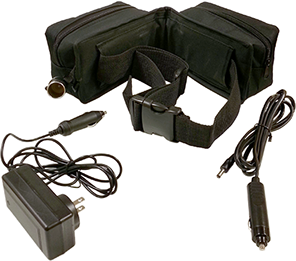
BB-70
70Ah Battery Belt
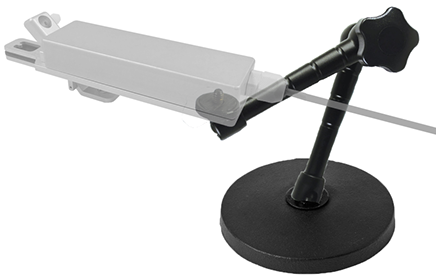
FL-ARM
Adjustable locking desktop arm
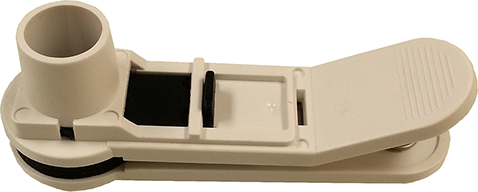
FL-DC
Dark adaptation clip
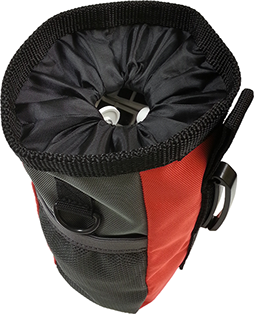
FL-DC50
Pouch of 50 clips
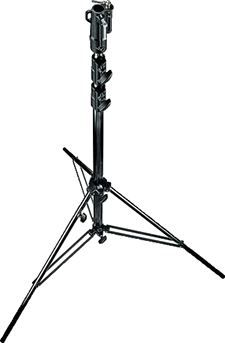
FL-T
Large universal tripod – extends from 1.4m to 3.2m
Request A Quote
Enter the information below, and a representative will respond to your request.
For the full product line, use the Request A Quote page.
"*" indicates required fields